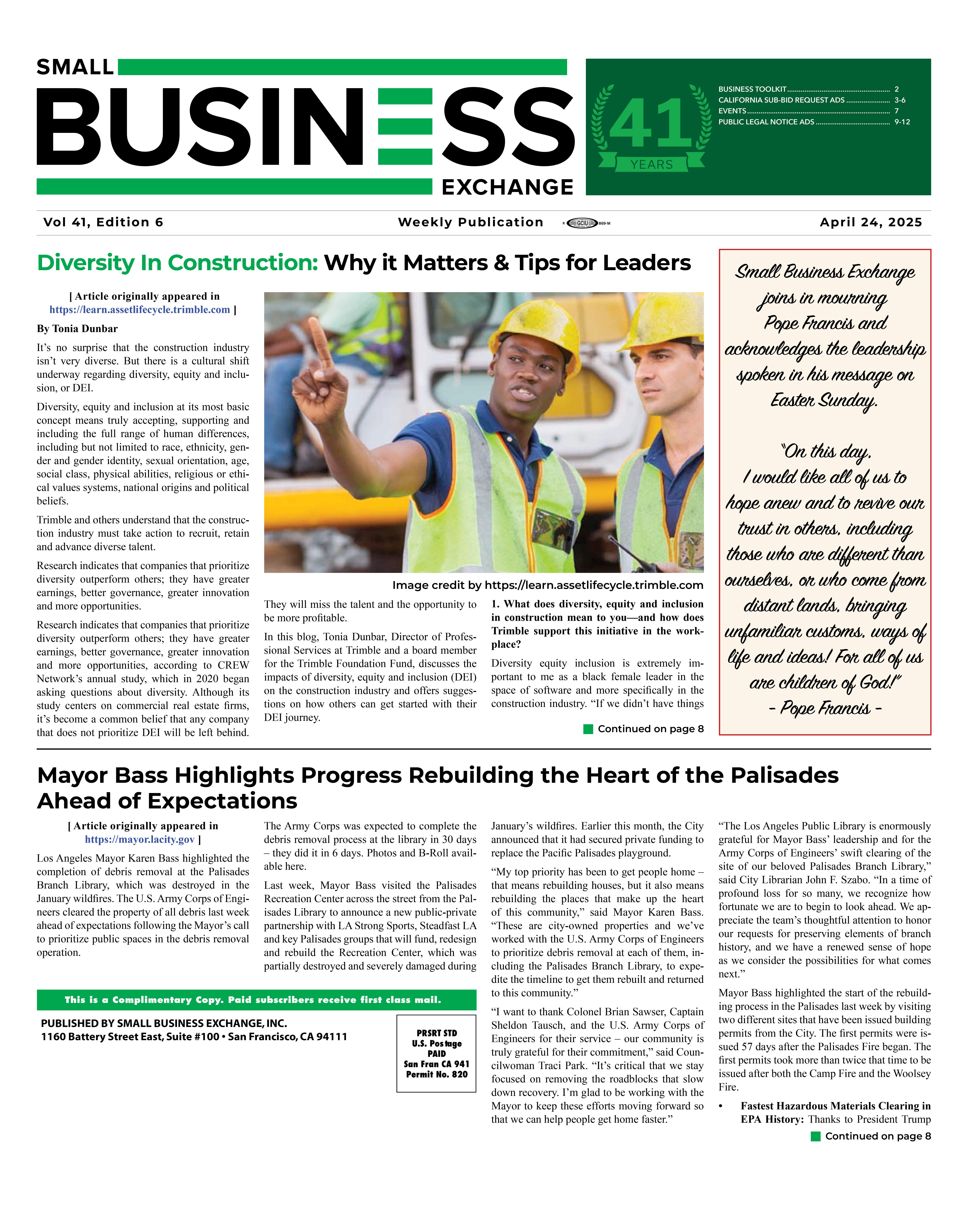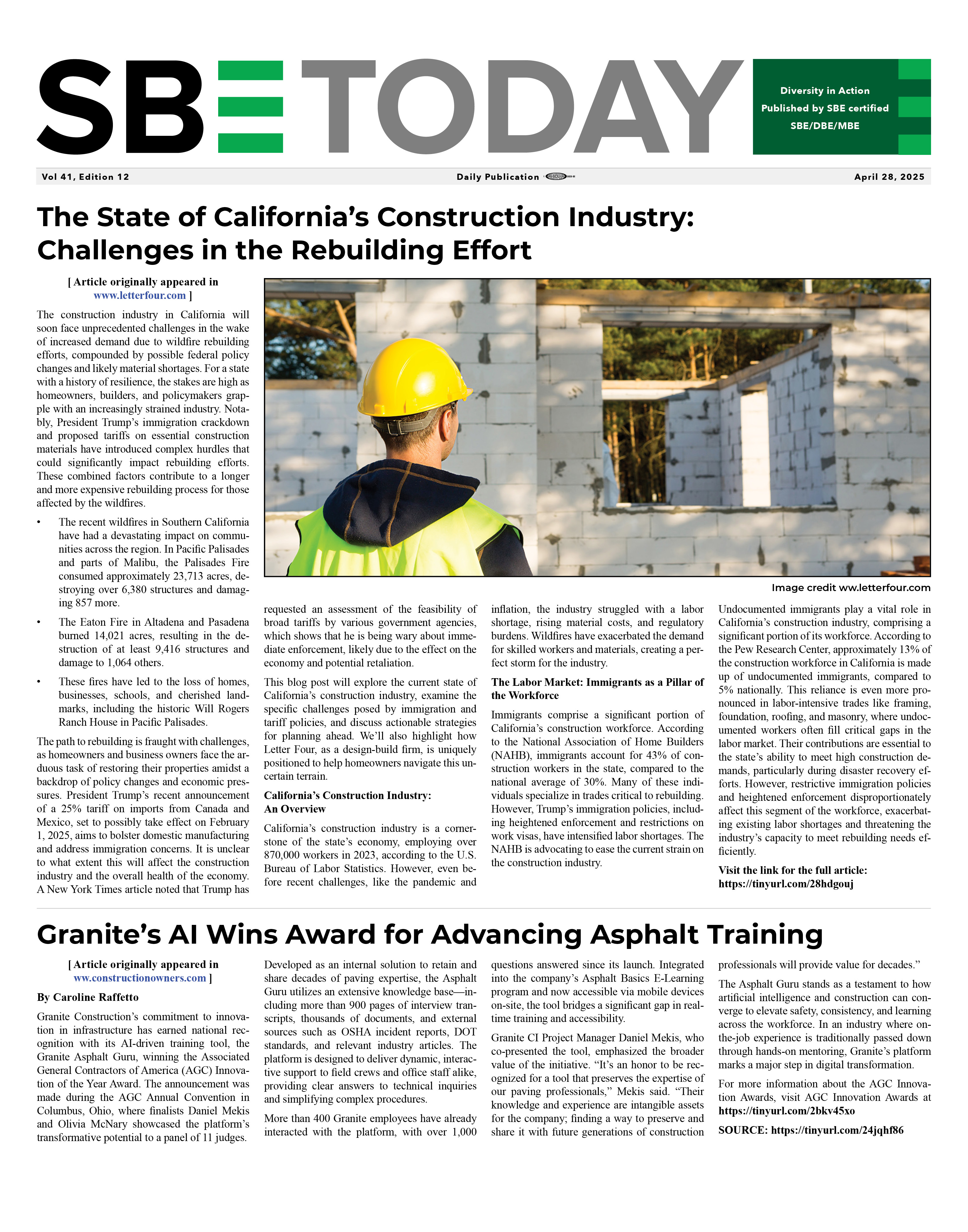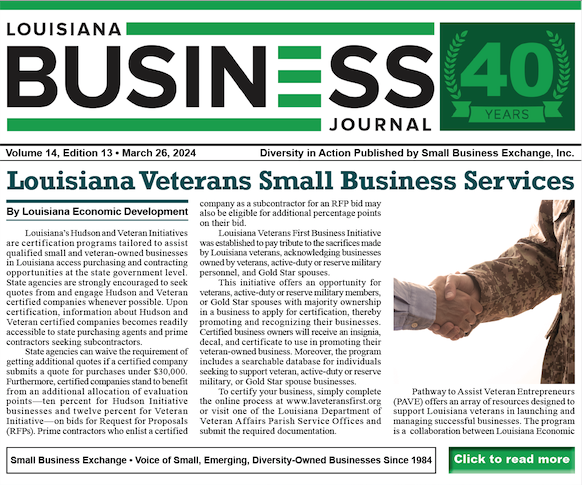Construction Risk Management: Identifying and Managing Project Risks
06/04/2020
[ Article was originally posted on www.constructconnect.com ] Risks aren't always a negative. Being able to effectively identify and manage risks can lead to increased profits, establishing good relationships with clients that result in more projects, and being able to expand your business into new markets and sectors. Types of Construction RisksFor proper construction risk management, you need to know the types of risks inherent in construction projects. These can be financial, contractual, operational, and environmental and can be caused by both internal and external sources. Common risks include:
When risks come to fruition, they can have a serious impact on costs, schedules, and performance of your project which will lead to delays and disputes down the road. The good news is most of these risks can be managed and mitigated with proper planning and good project management. Identifying Construction Project RisksNow that we’ve discussed some of the risks common on construction projects, it’s time to identify the risks unique to your project. This should be done as early as possible, preferably during the preconstruction phase of the project. Remember, if you fail to identify and manage a potential project risk, you are basically accepting the risk should it present itself during your project. Hold brainstorming sessions with the project team and stakeholders to identify risks. At this point, you aren’t looking to solve any problems. The goal here is to identify as many possible scenarios that could negatively impact the project. Be sure to rely on the expertise, experience, and knowledge base of your team. Review past projects with similar size, scope, and location you’ve completed to better understand the construction risks your current project is facing. A good way to prevent risks from sneaking up on you as the project progresses is to hold regular meetings with your project team and stakeholders. In addition to reviewing your current risk management efforts, you can also use that time to identify any other issues that may pop up in the foreseeable future. Construction Risk Management ProcessOnce you’ve identified the potential risks to your project, you now need to sit down and assess each risk based on the probability of becoming reality and the impact they will have on the project if they occur. Rank the impact and probability of each risk as high, medium, or low. High impact, high probability risks should be handled first, while risks with a low probability and low impact can be tackled last. Factor in the amount of time, money, and work each risk will require to effectively manage. Now that you’ve ranked each risk, carefully review each one and determine if you can avoid, eliminate, reduce, transfer, or accept each risk. Avoid the Construction Project RiskThis may mean turning down a project or negotiating the contract to remove the project risks. There’s no shame in walking away from a project if the risks outweigh the potential rewards. Transfer the Project RiskYour company might not be the right fit to manage a particular risk. Work with the other stakeholders to determine who on the project team is best suited to assume each risk. Discuss with the client what risks they will assume and which ones you will be responsible for managing. Work with your insurance provider to determine which risks are covered under your current policies along with other options for protecting your company against risks. Mitigate the Project RiskEliminating, reducing and accepting risks takes careful planning. Break down each risk into actionable items. Don’t overcommit your resources to handling multiple risks. You may need to bring in additional resources, such as hiring more workers or renting additional equipment, to manage all your risks effectively. Accept the Project RiskAgreeing to accept a risk is a decision that shouldn’t be taken lightly. It might be fine to accept a few low probability, low impact risks. Agreeing to accept a high probability, high impact risk without any type of management or mitigation could be detrimental to the project and your bottom line. Final Thoughts on Construction Risk Management
Good construction risk management requires a high level of collaboration and communication with all parties involved. Keeping everyone on the same page and working together will allow you to identify and manage risks before they become a problem. Remember, risks can lead to great rewards when effectively managed. Back To News |
|
|
|
ABOUT SBE Inc.
Small Business Exchange Inc., is the ultimate business information hub for small businesses, disadvantaged, Asian, Black, Hispanic Women and Disabled Western-owned Business. Founded in 1984 by Gerald W. Johnson and Valerie, Voorhies, SBE, has been working for over two decades to provide businesses with the most powerful tools available and accurate, up-to-date information about contract opportunities in the public and private marketplaces. CONTACT
Small Business Exchange, Inc.
Phone: 415-778-6250
© 2025 Small Business Exchange, Inc.
|
||
|
|
Construction Risk Management: Identifying and Managing Project Risks
06/04/2020
Back To News |
|





